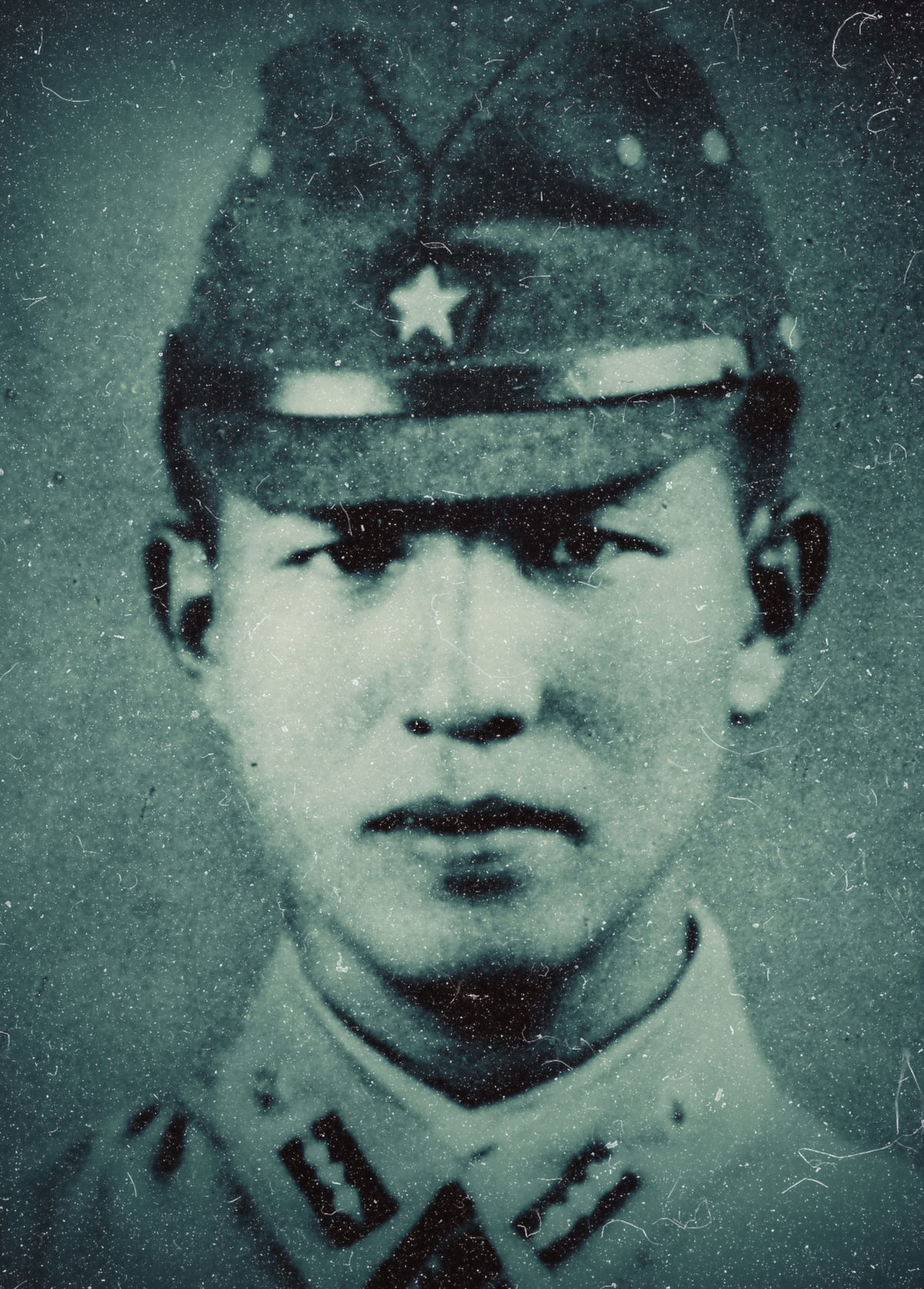Emelio Viaña went out to farm sweet potatoes with his two sons, Protacio and Diony, both in their early teens, at their farm near Yapusan on the western side of Lubang Island in the Philippines. It was March 8, 1961—the day before his 53rd birthday. After a morning of hard work, Emelio sat down for a lunch break and was drinking a cup of coffee. Gunshots rang out. The first bullet shattered Emelio’s upper thigh. Another shot struck his young son Diony in the leg. The two boys frantically dragged their father into the shelter of nearby aroma bushes—the large hard thorns were piercing and painful, but their terror was worse.
Bleeding heavily, Emelio couldn’t move. His sons barely managed to drag him away as fast as they could to their small boat and row him to a small fishing port at Tubahin. Still in mortal fear of being shot at as they paddled away, they watched helplessly as their father bled to death in front of their eyes. By the time they reached safety it was too late. Emelio was gone. Amid all the horror there was one sight that Protacio would never forget. While hiding in the thorny bushes he had seen his father’s murderer stalking them. It was a Japanese soldier.
A Series of Killings
The murder of Emelio Viaña was one in a series of killings that plagued Lubang Island for decades from the end of World War II until the 1970s. All the victims were islanders going about their daily lives who were targeted and assaulted at moments when they were isolated and vulnerable. Their grieving family members have never forgotten them, and their deaths tore wounds in their close-knit community which are still unhealed.
Yet these victims have been forgotten in the world’s collective memory. By contrast, the man responsible for these grisly crimes—which he would later refer to euphemistically as “guerrilla warfare”—became something of a celebrity. His name was Hiroo Onoda.
Onoda shocked the world when, 29 years after World War II ended, he materialized from the wilderness of Lubang Island in 1974 still dressed in his Imperial Japanese Army uniform and formally surrendered. He claimed not to have known that the war had ended—a claim he reinforced with his 1974 autobiography, No Surrender: My Thirty Year War, in which he also claimed to have been conducting a so-called “guerrilla war” on Lubang Island without admitting to the details of what that meant. Returning to Japan as a hero, he died in 2014 and has passed into legend, frequently cast into the role of a “lone samurai” type of character. His story has received renewed attention in recent years—such as in Arthur Harari’s 2021 film, Onoda: 10,000 Nights in the Jungle, and a fictionalized 2022 novel about him penned by eminent German filmmaker Werner Herzog. Onoda fascinates people.
Meanwhile, in the shadows of Onoda’s dazzling fame stands a host of his silent victims waiting to be noticed. The violence against local people that Onoda barely admitted to in his autobiography has so far done nothing to dim his glamor in popular imagination. The murders committed by Onoda and fellow Japanese stragglers under his leadership on Lubang Island have largely been forgotten and ignored. Until now.
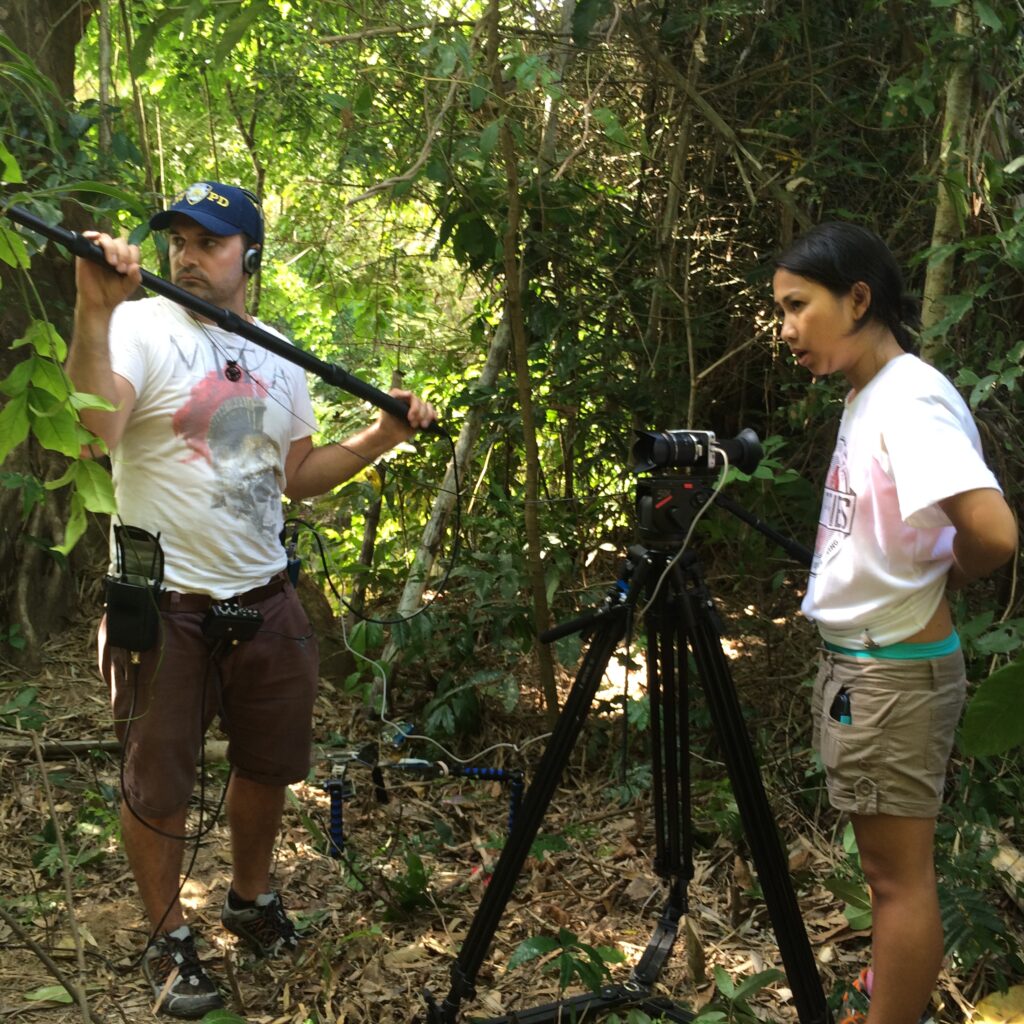
“He committed acts of terror against these people for 30 years. No one has ever asked for their side of the story,” independent documentary filmmaker Mia Stewart told MHQ in an exclusive interview. Mia is Emelio Viaña’s great-niece. With a personal connection to Lubang Island and a dedication to historical research that has seen her gathering testimony from islanders and investigating Onoda for more than 10 years, she seeks to ensure that the voices of Onoda’s victims are finally heard in her documentary, Searching for Onoda. The documentary is in its final stages of production.
“The thing I want to bring out in my documentary is the resilience of the island and the Filipino people as a whole,” said Mia. “That’s something that I want to highlight.”
Onoda claimed to have been a soldier continuing to fight a war. Yet the people he attacked in cold blood were civilians, unarmed and incapable of self-defense. They were not only shot, but also often stabbed and mutilated. It begs the question: was he a soldier…or a serial killer?
A New Look At Onoda
Mia’s journey to create the documentary began in high school. Although she grew up in Australia, her mother was raised on Lubang Island and one day mentioned Onoda when Mia was doing research for a school project. Intrigued by Onoda’s story, Mia located his autobiography at a local library and discussed her findings with her mother. “I showed my mum the book and she said, ‘That’s interesting that he’s written all this stuff but he doesn’t actually mention the shootings.’ I asked, ‘What do you mean, shootings?’ And then she told me, ‘He killed people.’”
That was when Mia learned about the murder of her great-uncle Emelio Viaña for the first time—and she soon found out there were even more victims. While their surviving relatives vividly remembered their murders, the victims and their deaths were omitted from Onoda’s autobiography, and thus from known history. “Afterwards I thought, ‘There are all these killings missing from the book. I want to find out about that side of the story.’ That’s how the documentary started.”
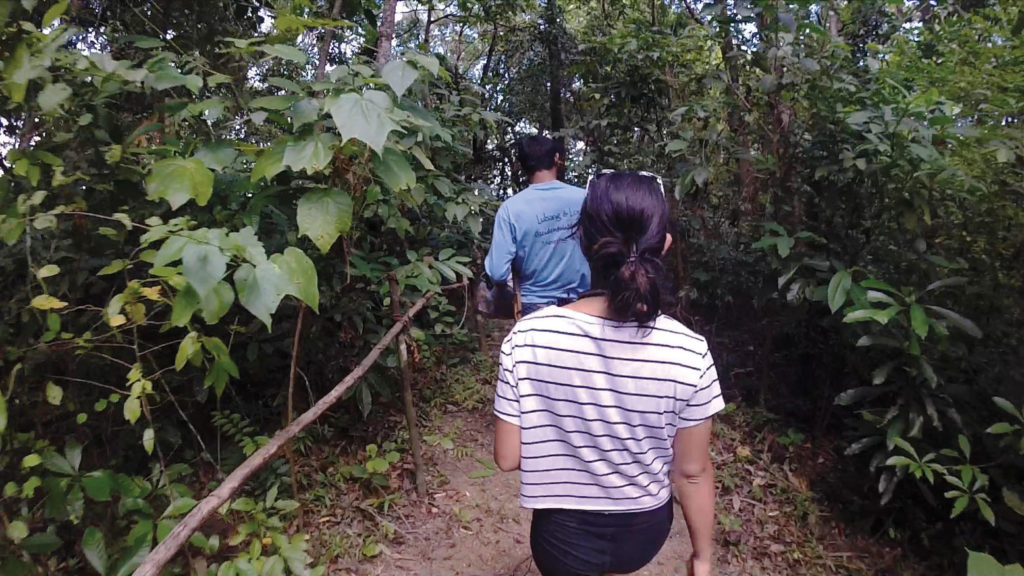
Fifty-square-mile Lubang Island, located about 90 miles southwest of Manila, is tranquil and beautiful—not the type of place one would expect to find death prowling in the shadows. Its beaches are serene and its mountains majestic. Local residents earn their livelihoods from farming and fishing. Mia’s family hails from Looc, a small fishing village on the southwestern tip of the island.
Life there was simple but demanding, according to Mia. “The men worked hard on the farms to send their children to Manila to further their education, in order to support their families,” she said. Apart from work, the community is centered around church and family. Street parties and fiestas celebrate certain Catholic saints or feast days. During the postwar era, most families lived in nipa huts. The children there still walk to school and neighbors don’t feel the need to lock their doors.
“My family in particular, the Viaña family, make up a large portion of the population in Looc—and everyone knows everyone. So a death in the community feels like a death in the family,” she said.
A deadly Menace
Murder stalked the island beginning in the 1950s. Onoda had made himself the de facto leader of a group of three other Japanese stragglers: Pvt. Yuichi Akatsu, Cpl. Shoichi Shimada and Pfc. Kinshichi Kozuka. Akatsu, later disparaged by Onoda in his book as a “weakling,” surrendered in 1950. Shimada did not last long, being shot in 1954 when the group was engaged in depredations. Kozuka and Onoda, who became best friends, went on together for 18 years.
Working together as partners in crime, the pair were responsible for the murder of Emelio Viaña in 1961 and spent over a decade butchering local inhabitants of Lubang, who called them demonyo sa bundok, meaning the “devils of the mountains.”
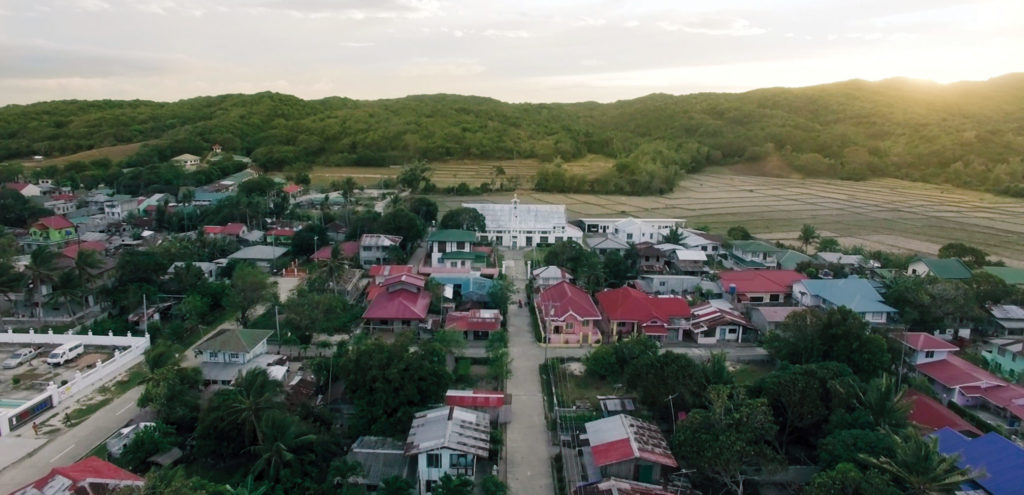
“The 18 years that Kozuka and I spent together were the ones in which I was most actively engaged in guerrilla tactics,” Onoda states ambiguously in his autobiography, euphemistically referring to violence against civilians as guerrilla warfare as he usually did. “This was due to a large extent to the rapport that existed between us. We nearly always saw things the same way, and frequently we needed only to look at each other to decide what we would do next.”
Onoda claimed to be the brains of the pair, stating that Kozuka “deferred to me in matters of judgment.” Kozuka was ultimately shot by police in 1972, leaving only Onoda who decided to come out of hiding a mere two years later.
Cold Blooded killings and Police reports
Onoda manages to sanitize any sense of criminal behavior from his narrative. Although his book gives the impression that he was fighting some type of war against some opposing enemy force, the reality was much different. The people Onoda targeted were local residents he ambushed when they were working, sleeping, eating lunch, walking, or doing ordinary activities in the company of their children or grandchildren. Many were violently slaughtered with knives.
Residents lucky enough to survive their wounds after being shot at were often left crippled, Mia said, and rendered unable to perform manual labor to provide for their families. “They [the Japanese] were seen as a pest, thieves, and killers,” she said. If Onoda and his partner were really fighting a “war,” it seems to have been a war on innocent civilians.
“Quite a few people [I’ve interviewed] have talked about the killings. My documentary focuses on the killings that happened on the south of the island where my mother is from,” said Mia. “I have at least six official death certificates based on police reports which prove that Onoda actually killed these people due to the manner of their injuries.”
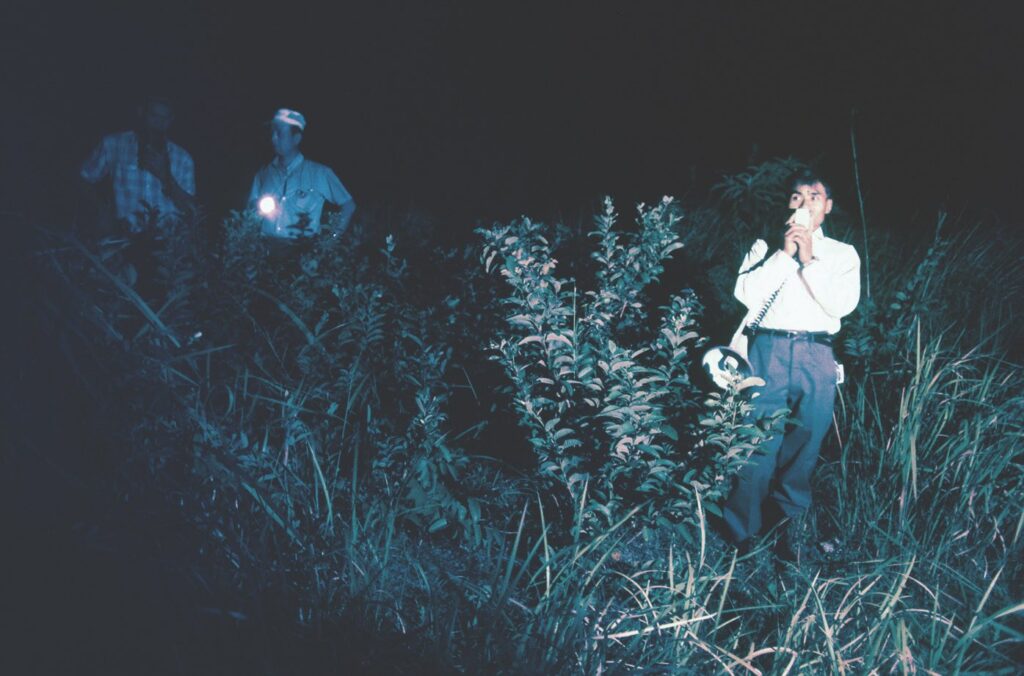
Stalked by hidden executioners, local people lived under a pall of fear. The island was deceptively quiet and peaceful at intervals before something horrible and bloody would happen. The murders were unpredictable but occurred regularly. Nobody knew who would be next. Not content with slaughtering civilians, the Japanese holdouts also sneaked into people’s huts and even the local school to steal items like pots and pans, bags of rice and other sundry items. Residents were constantly terrified. Nowhere was safe, and they had no recourse from predators who continuously victimized them.
“There was a shadow cast on their lives. They couldn’t go and farm. They couldn’t harvest without the fear of being attacked. Children couldn’t go play out at a certain time,” Mia said. “The value of their land and farmland was essentially reduced—they weren’t able to be as productive on their farms without the threat of someone being killed. They were taking their lives into their own hands whenever they ventured out.”
Families shattered
Mia’s research has found that a series of particularly twisted killings occurred during the time frame when Onoda and Kozuka were together as partners. One example was the murder of Ayong Tagle in 1964. His daughter Estelita was in grade school at the time. Accompanied by some other men, he went to a field just outside the village to harvest rice. Carabao hitched to carts helped them plow. It should have been a fairly easy workday, not far from home—the field was only 2 kilometers from the town center. The men took a midafternoon break. Ayong lay down to sleep in a small hut beside the field. Suddenly there was a commotion. Onoda and his partner Kozuka had arrived with homicidal intentions. Everyone fled. Ayong didn’t make it.
“When one of his coworkers came back, his body was found in the middle of where they had been plowing—in an open circle area—and he had been decapitated,” said Mia. His body, marked with wounds from a large blade, was brought back into the village with some difficulty. “It was hard to get to him because the fields were all in flames,” Mia said.
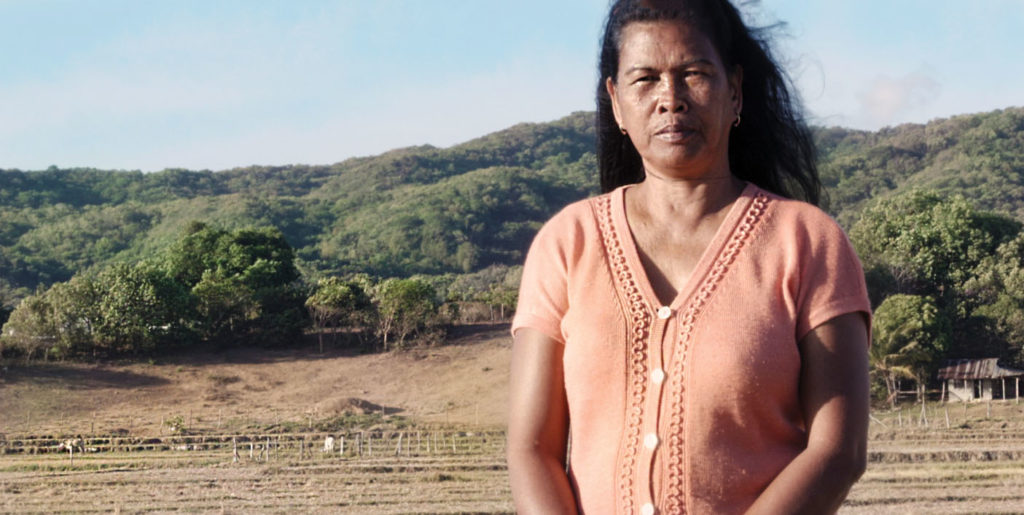
The townspeople were horrified by the shock of the grisly murder in such immediate proximity to their homes, as well as by the sight of their neighbor’s bloodied corpse. “The whole town witnessed that. All the young kids witnessed that,” said Mia.
Ayong’s horrifying death came as a devastating blow to his daughter Estelita, then age 6. Yet more hardship was in store for the family. After losing her husband, Estelita’s mother went blind. “It was very hard for the children because they lost their father and their mother really wasn’t able to do much physical labor to help provide for them. It kept them in a certain state of poverty,” said Mia. “Obviously it affected the whole trajectory of their lives.”
While Onoda was feted in popular legend over the years as some type of modern samurai warrior, not a single person ever asked Estelita to speak publicly about what had happened to her father until Mia interviewed her several years ago. “When I interviewed her, she said, ‘You know, this is the first time I’ve ever told this story…and whenever I hear the name Onoda, I get so angry.’”
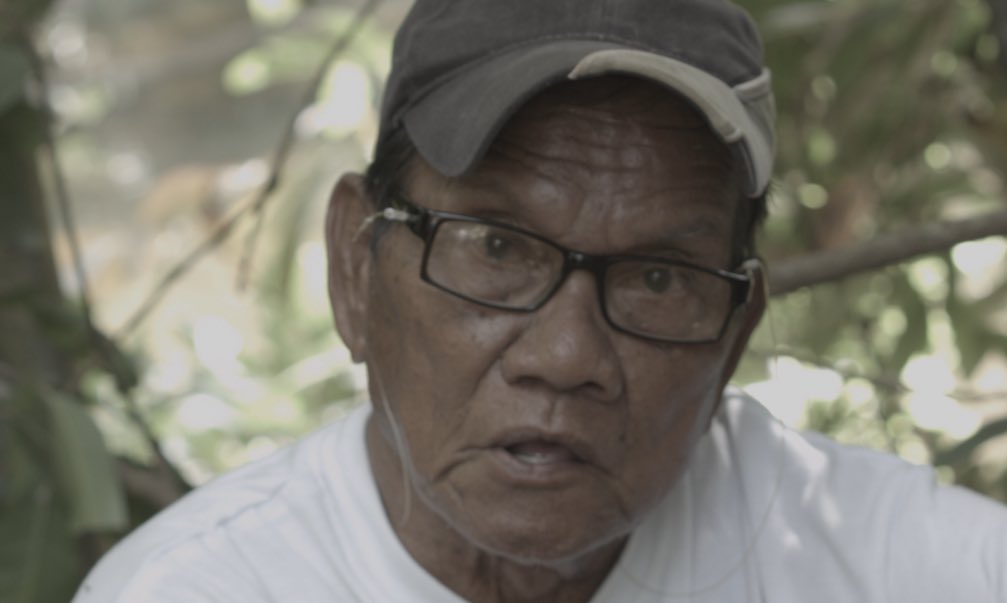
Another child who spent a lifetime grieving for his murdered father was Bernardo Canals, who later became a local official. Bernardo was asleep one early morning when a neighbor woke him, yelling that Bernardo’s father Rafael had been shot by the Japanese and telling the boy to hurry and go to him. Bernardo frantically jumped onto a horse and rode down unpaved paths to the part of the island where his father had been working. He hoped to reach him and find him alive. Instead he ran straight into other locals carrying his father’s lifeless body down the road.
“When I interviewed him, his anger was still palpable. He was still very hurt by what happened,” Mia said. “Like in many of these cases, he was the eldest son and then had to provide for his family. It changed his life. Aside from losing his father, he then had to look after siblings and then couldn’t pursue his own dreams.”
The murder was detailed in a police report—as was that of Francisco Villar, killed in front of his young grandson. Mia’s grandmother, who has since passed away, gave an interview to Mia in which she recalled the day vividly. The women of the village went to a nearby river to wash clothes. Out of fear of being attacked, they always went in a large group for safety. One day gunshots rang out nearby and a boy came screaming into their midst, telling them to run and that the Japanese had shot his grandfather. They fled for their lives. “When local police returned to the location, they found the young boy’s grandfather shot, with knife wounds on his body,” said Mia, who obtained Villar’s death certificate.
Written Out of History
None of these deaths appear in Onoda’s autobiography, which seems to overdo itself in trying to impress upon readers his supposed military goals. One thing, however, that the book cannot hide is the contemptuous attitude Onoda had towards Filipino civilians. His references to them are terse and cynical.
His description of how he identified Norio Suzuki, a young explorer who ultimately secured his agreement to surrender, as Japanese is particularly telling. “If he [Suzuki] had not been wearing socks, I might have shot him…The islanders would never do anything so incongruous. The ones who could afford to wear socks would have had shoes on too,” Onoda expressed with disdain. This offhand remark indicates that Onoda was not only well-aware of the poverty of local residents but would have been willing to shoot an islander merely at the sight of their sandals.
When Onoda finally surrendered in 1974, there was no investigation into his actions on the island. He received what amounted to an unconditional pardon by Philippines’ President Ferdinand Marcos. In a televised ceremony, Marcos embraced Onoda, said that he admired the latter’s courage and welcomed him to stay in the Philippines, according to a March 12, 1974 report from the New York Times.
The families of victims on Lubang Island—and indeed the ghastly experiences of the islanders for three decades—had been ignored. “The local authorities had to hold people back. The day that Onoda surrendered, the locals had gotten wind of what was going to happen and people basically wanted to attack Onoda and kill him,” Mia said.
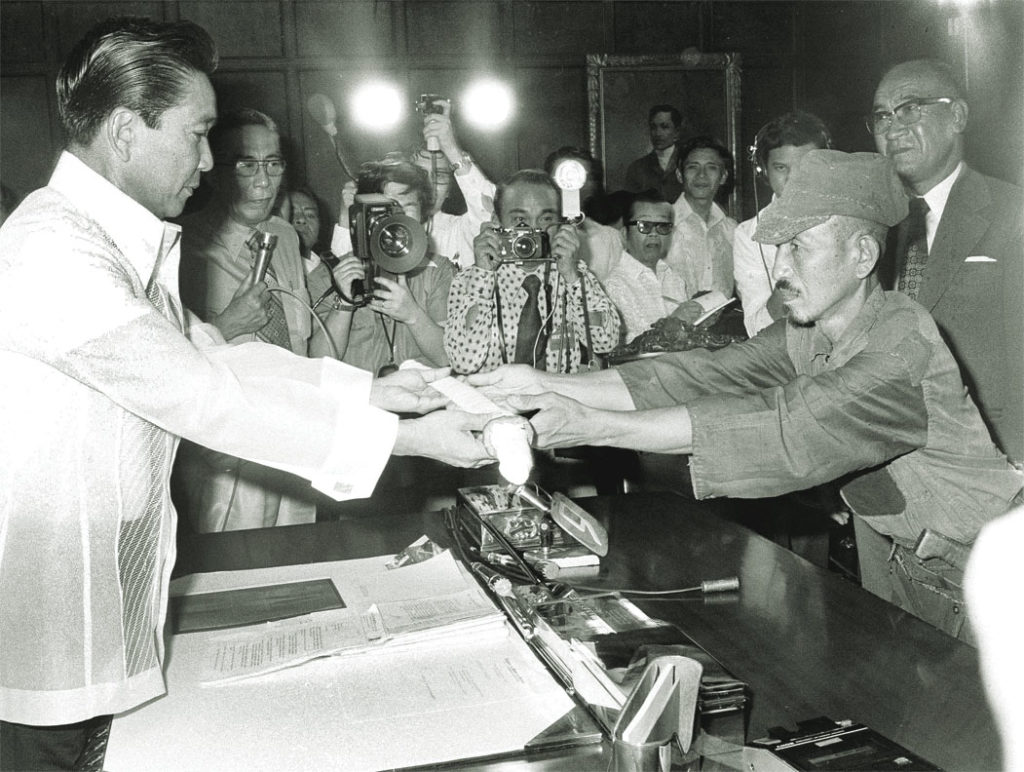
Bernardo Canals was one of many people who felt they had been denied justice. He and other islanders welcomed the opportunity to share their stories with Mia in the hopes of getting wider recognition for Onoda’s victims and surviving relatives. Sadly, Bernardo passed away during the Covid-19 pandemic. Many of the other witnesses to events on the island and relatives of victims have also passed away due to their advanced age.
“That’s one of the most important things for me—80% of the people I’ve interviewed, including my own grandmother, have all passed away since I started filming and doing these interviews,” Mia said. “A lot of these interviews are the very first—and last—times that they are able to tell these stories.”
Onoda and the Yasukuni Shrine
In fact, one person who Mia managed to get to agree to being interviewed was Onoda himself, who had previously refused to speak with her for five years; but he passed away at age 91 on Jan. 16, 2014 before the interview could take place.
“I was in Japan the day he died,” said Mia, who had arranged to meet Onoda at the controversial Yasukuni Shrine in Tokyo. “I couldn’t interview my main subject anymore. He had died and that changed the whole thing.”
Created in 1869, the Yasukuni Shrine is the official home, according to Japan’s Shinto religion, of the souls of war dead who died for Japan’s emperor. In Shinto belief, the souls of the dead become deities called kami, who are venerated by the living. The shrine currently includes war criminals among honored deities, regularly making it a focus of international political controversy. Two months after Onoda’s death, Mia traveled to the shrine for his memorial service.
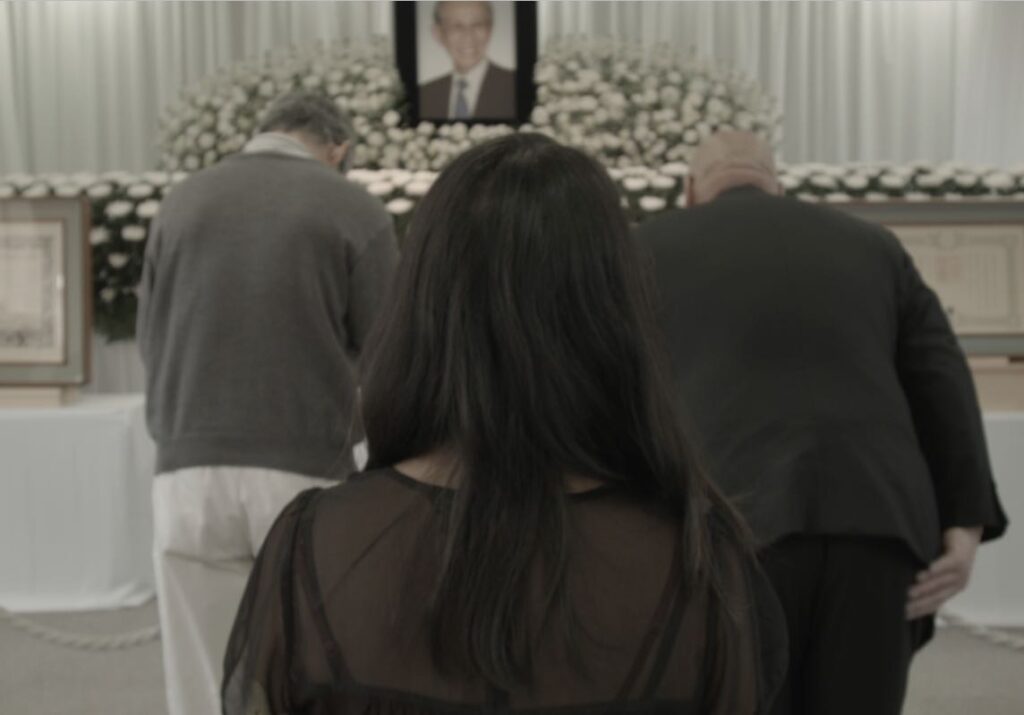
“Four months earlier I had just been filming on the island and was interviewing relatives and people from the island who were talking about how difficult life was for them, how Onoda basically ruined their lives,” she said. “To be attending his memorial afterwards felt really odd.”
However, as part of her research, Mia was determined to gain a better understanding of this man who had taken so many lives.
“I was trying to be as respectful as possible to the process itself. But it was very strange to be at the shrine. There were a lot of people attending,” said Mia. She met Onoda’s elderly wife, then in a wheelchair, at the service. “I shook her hand and I was introduced to her, and someone said to her, ‘This is Mia. She’s from Lubang Island.’ She acknowledged my presence.”
Although she would have liked to have interviewed Onoda personally, Mia was glad to be able to witness his history from a different perspective. “It all happened not the way I intended or planned. But I’m thankful I was able to be a part of that.”
A Complex Legacy
The Japanese people she has interacted with throughout her research for the documentary have been very accommodating. “I got to meet and become quite close to people who Onoda was close with in his life after Lubang Island. It’s almost like he was a different person to them,” she said. “They knew him as this kind old man. I got to know people who worked really closely with him, who regarded him as a grandfather. For me that provided an unexpected complexity to my documentary.”
Mia visited the Onoda Nature School in Japan, a wilderness survival school for youth he founded in the 1980s. “Japanese hospitality is just amazing. They made me feel really welcome. They told me about what Onoda was like when he came back,” said Mia.
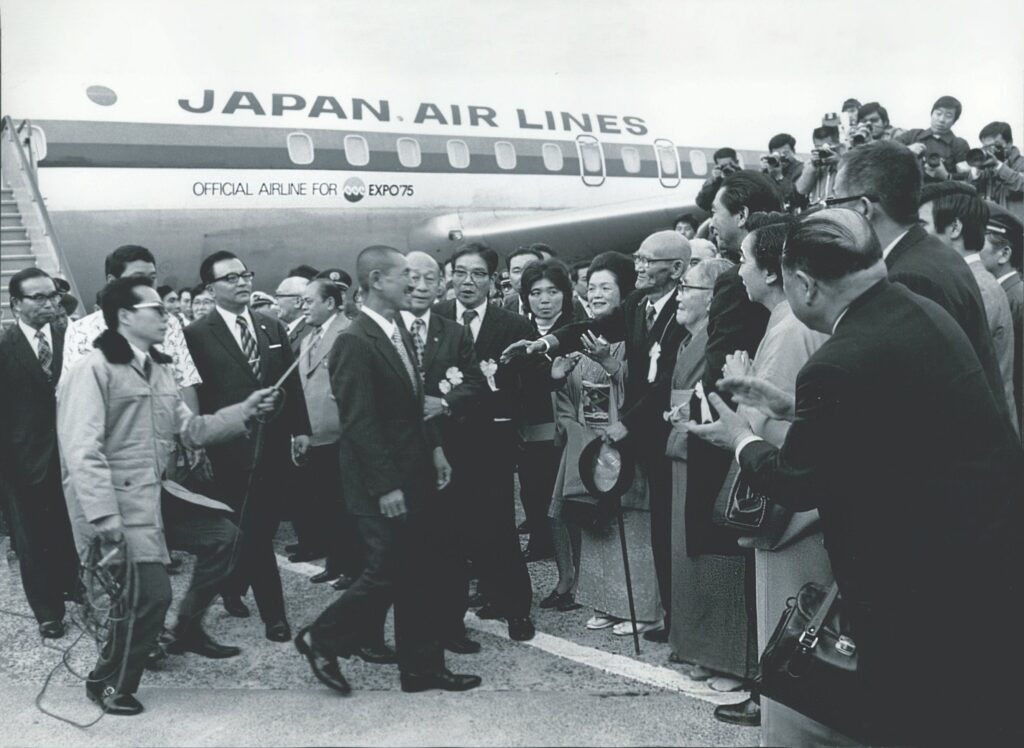
She did broach the topic of the murders on Lubang Island but, like most people, her gracious hosts were unaware of the details of what had happened. “It was a mystery to them as well,” she said. “A lot of them didn’t even really know the full extent of the killings. They knew that Onoda had thought it was still wartime and was probably responsible for something, but they weren’t sure of the details. I think it will probably shock a few of them when they see my documentary to find out about how brutal some of the killings were.”
However not all Japanese are fans of Onoda. Mia uncovered some startling revelations from interviewing the sons of Tsuda Shin, the ghostwriter who helped write Onoda’s autobiography. Tsuda Shin felt guilty during his lifetime about the role he played in writing Onoda’s memoir. He published a book of his own detailing how Onoda’s famed autobiography was less of a candid testimonial than a carefully crafted document shaped by Onoda and a group of Japanese publishing professionals gathered at a nature resort.
Tsuda Shin also perceived darkness in Onoda’s character—something he details in his book, which Mia is working to publish in English. “His sons have given me permission to republish that in English. I have already translated it. I’m just going over it and editing it with another translator,” said Mia. “They also gave me permission to write my own foreword and that is where I am going to acknowledge the victims. I’m planning on publishing that along with the documentary.”
The enduring Myth
Mia understands why Onoda’s survival story has been spellbinding to many people. Like many others, she was intrigued by his tale when she first heard about him. “He basically went in when he was 22 and he came out when he was 54. It was this idea of a soldier trapped in time, who had sacrificed his youth. That was a strong image I had,” she said. “I almost had a sense of pity for him, thinking of all the years he had lost.”
Yet after traveling to Lubang and collecting interviews from local residents as well as from her relatives, her perceptions changed. “That for me was the biggest shift. That happened very quickly as soon as I was at the island and able to see firsthand the anger that came out of people,” she said. “The thought came to mind, ‘It’s true that Onoda lost years, but these people lost their lives.’”
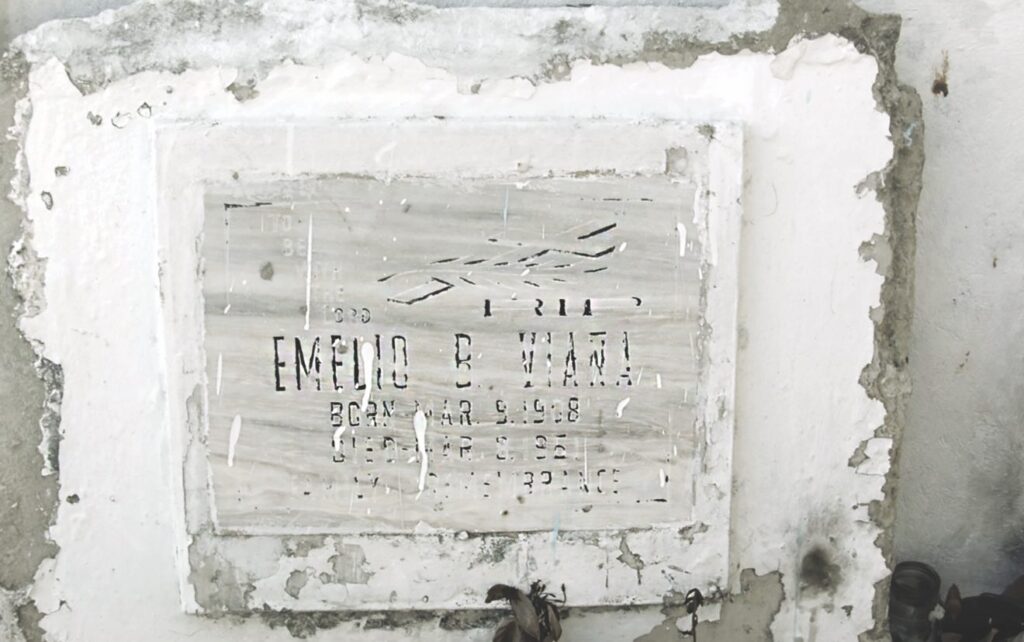
The true details of Onoda’s stay on the island have been lost within mythology. Mia says that many people perceive Onoda as a “lone survivor” and do not realize that he was with Kozuka for more than 20 years. “In a way, I can understand that there is an appeal to the story because you can have this romanticized view of a soldier and lone survivor surviving on coconuts, living in the jungles in this isolated place. But Onoda was actually not alone,” she said. “Then there’s also this myth that he was heroic. No, he wasn’t heroic. He killed people and he was actually a murderer.”
As to whether—or when—Onoda really knew the war was over? Another overlooked fact is that Onoda admitted to having looted a transistor radio in 1965. Various theories abound, according to Mia. “There are people who, without wanting to portray Onoda as a victim himself, want to comment on the way the Imperial Army trained their soldiers to never surrender and think a certain way. There are others who say that Onoda was trained to look at things differently as an intelligence officer. Then on the other hand you have people who say, ‘Well, if he was trained as an intelligence officer, then why couldn’t he work out that the war was over?’”
Onoda’s knowledge of when the war ended is something that Mia cannot definitively prove and something she says people can form their own opinions about. Regardless of those details, she wants to draw attention to the cold-blooded murders of unarmed Filipino islanders which cannot be characterized as acts of war by any stretch of the imagination.
“When someone comes across him, the reaction is always like, ‘Wow, this guy was such a hero.’ Or, ‘What determination! What strength, what courage!’ No one ever really stops to think what the consequence of his ‘war’ actually meant,” she said. “If he was fighting a war, who was on the other end of that? Who was he fighting? It wasn’t an enemy. It was civilians. It was innocent people.”
Remembering the Victims
Today a shrine stands on the spot where Kinshichi Kozuka, Onoda’s partner in the killings, died after being shot by Filipino police during one of the duo’s violent raids on the local community. It is supposed to be a peace monument. Nevertheless its memorialization of Kozuka’s death is inescapable.
What about the murder victims—the people whose ancestors had lived and worked on the island for generations, who were simply going about their daily lives when they were brutally killed in front of their children and neighbors? Has anyone built a monument for them? “No,” answered Mia sadly when asked this question, adding that a memorial for the victims has been a main goal of hers that she has been unable to realize yet. She intends for the documentary and translated book to serve as lasting tributes to the victims. “But it would be great to have a physical place on the island.”
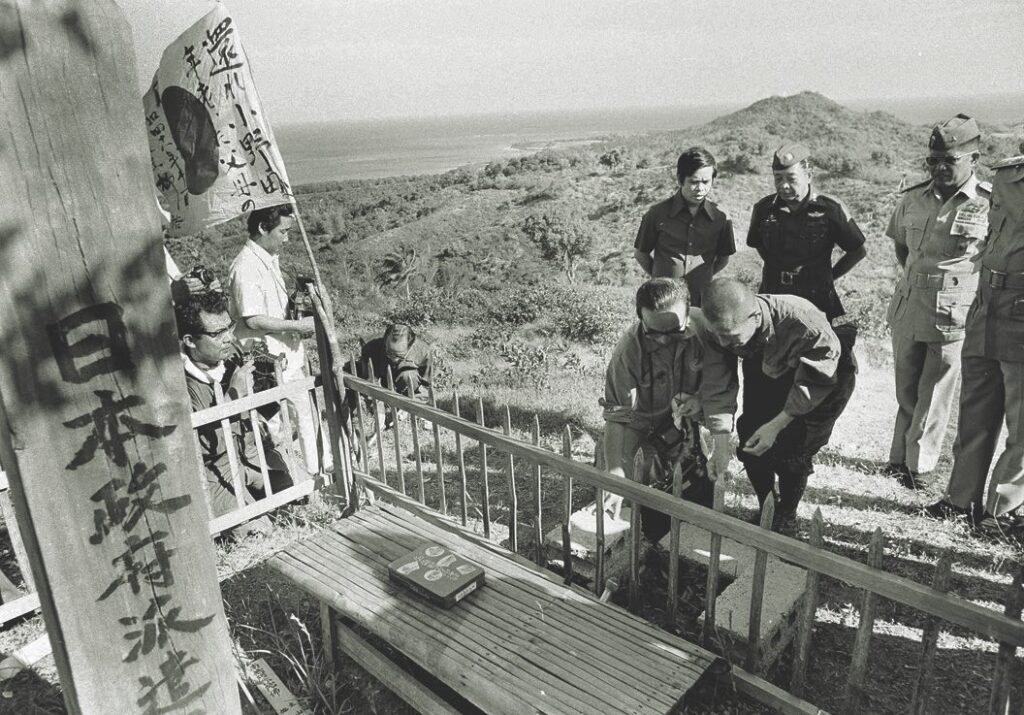
The documentary is in its final stages of production, but Mia has been struggling to pull together enough funding to complete it. Although local people from Lubang are “excited to have their story told,” it has been challenging to get people capable of sponsoring it interested in doing so. “My family is constantly asking me when it’s going to be finished. But I haven’t been able to get it over the line yet,” she said. “It’s just a matter of getting enough funding together. That’s been one of my biggest challenges.”
One fiscal sponsor for Mia’s documentary is the From the Heart Foundation. “People can make 100% tax deductible donations through that. That’s the main sponsor at the moment.”
The reasons for Onoda’s popularity might lie with the way that Onoda and people close to events chose to present the story. “He said he didn’t know the war was over and he represented this relic to a time in Japan that people were maybe feeling nostalgic towards and strengthened some sense of national pride or identity. I think that whole narrative really served his agenda, the [Japanese] government’s agenda, and also relations between the Philippines and Japan as well, because essentially Ferdinand Marcos forgave Onoda and pardoned him for his crimes. He was never put on trial for what he did.”
Mia wants people to question Onoda’s legend. “The main thing for me is getting this story out there as much as possible, so that when people come across Onoda and Google him, they will immediately also see the other side of the story.”
To learn more about and support Mia’s work on the documentary, visit https://searchingforonodadoc.wedid.it/. To learn more about her accompanying book translation project, visit the project website here.

